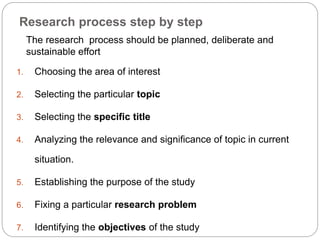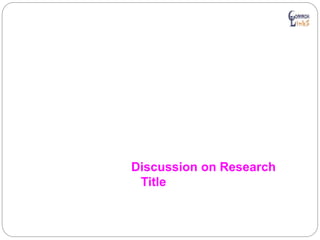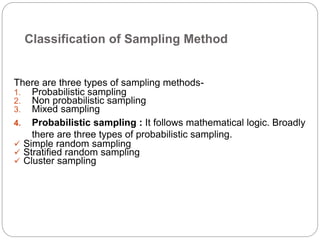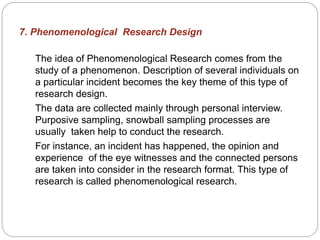The document provides an overview of the concept of research. It discusses that research unfolds new knowledge, is a systematic process based on logic, and establishes cause-and-effect relationships. It also notes that research involves asking questions, investigating to find facts, and is a continuous process that requires communication. Additionally, the document outlines several steps in the typical research process, including choosing an area of interest, selecting a topic, establishing objectives and hypotheses, conducting a literature review, collecting and analyzing data, and writing a report. It also discusses various research methods like surveys, case studies, interviews, and observation.










































































































































